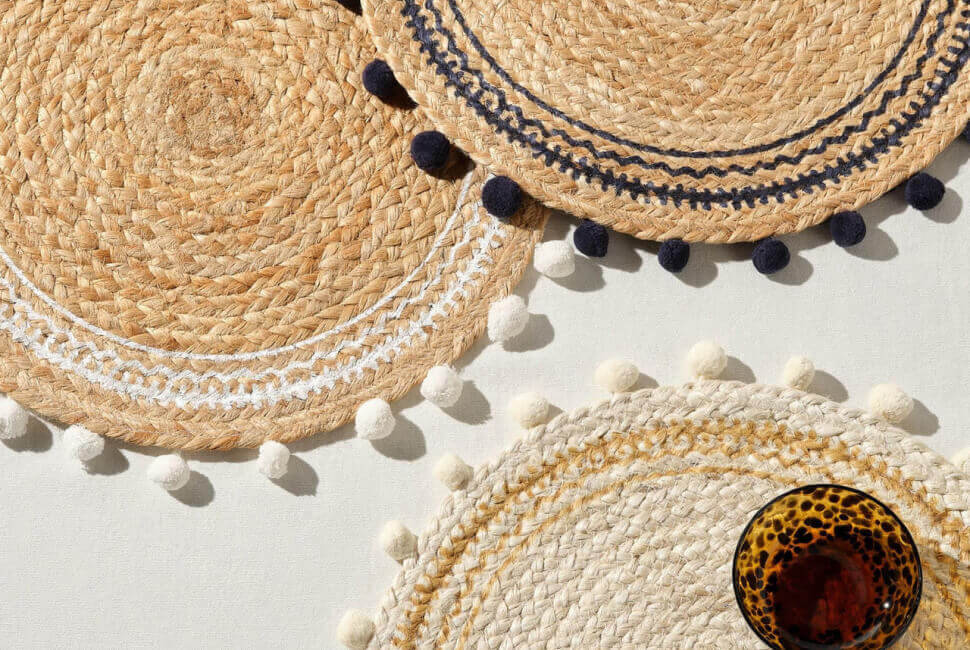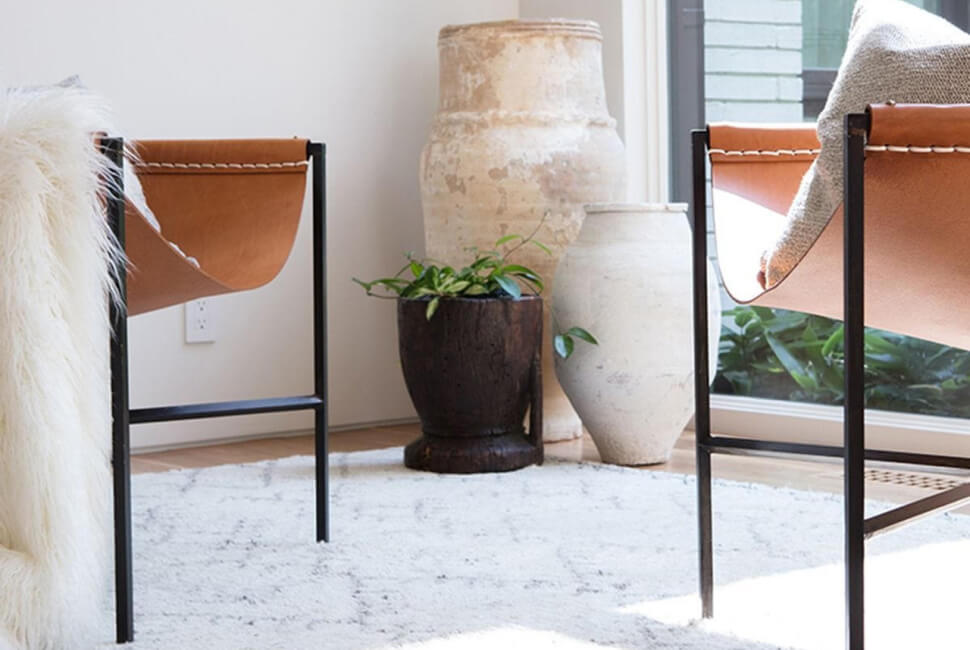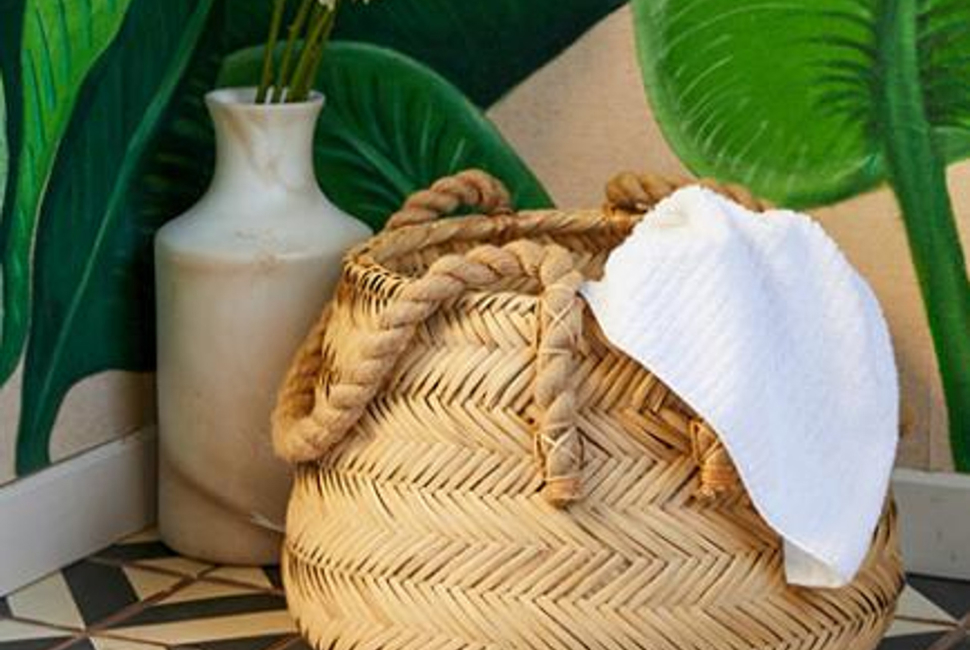Color, Texture, and Theme: Elements to Consider When Defining Your Home Decor Style
Posted by Belle and June on April 5, 2024
Your home is more than just a physical space. Your home is your sanctuary, your canvas, and your mirror. The way you choose to decorate your living space speaks volumes about who you are and what you value. In a world brimming with Pinterest boards and Instagram feeds overloaded with exquisite interior design styles, it's no wonder people feel the pressure to define their own home decorating style. But where do you start?
It pays to try dissecting the various home decor styles and unpack the elements that craft them. This way, you'll not only be able to name your style but also defend it with an informed perspective that screams 'you'.
Crafting
The importance of defining and refining your home decor style is not just for the aesthetics; it's a channel to express your individuality and create a space that truly feels like home. Choosing a home decor style is akin to defining a personal style and brand—it's a snapshot of your personality and the lifestyle you want to embody.
Your Personality in Patterns
Your home's style is an extension of your personality, so it's invaluable to consider who you are and what makes you tick before committing to a decor overhaul.
Minimalism
If you are someone who thrives on simplicity, relaxation, and a Zen approach to life, minimalistic style could be your style. It champions clean lines, uncluttered spaces, and a predominantly monochromatic palette. Minimalists favor quality over quantity and shy away from excess. A home influenced by minimalism exudes calm and order, perfect for the introspective and focused individual.
Farmhouse Charm
On the other hand, a farmhouse style resonates with those who are nostalgic, warm, and value simplicity and authenticity. Think weathered woods, distressed furniture, and a soft, serene color scheme. This style often includes elements like wicker and vintage finds, creating a cozy, lived-in feeling that beckons family and friends to gather.
Mid Century Style
Mid-century modern styles embrace forward-thinking, imaginative personalities. With its bold colors, geometric patterns, and a mix of natural materials and man-made materials, it's a style that celebrates the unorthodox. Those who gravitate towards this style appreciate innovation and the unapologetically unique.
Bohemian
Bohemian or "boho" style is for the free-spirited and the adventurers. This style is all about self-expression, with a focus on global-inspired textiles, unconventional furniture, and an array of vibrant hues. It's an eclectic mix where every item has a story, reflecting a life rich with experiences and wanderlust.
Industrial Edge
For those who favor the rugged and the authentic, industrial style is the way to go. It's about showcasing raw building materials and urban aesthetics. Exposed brickwork, bare concrete, and metal fixtures give your space a no-nonsense, charismatic edge that's ideal for those who appreciate the beauty in utilitarian design.

Practical Matters
Your lifestyle plays a pivotal role in the home decor you choose. Aesthetic preferences have to align with practical needs for a space that's pleasing and functional.
Lifestyle and Routines
Consider how you live and the daily routines that shape your home needs. Do you work from home and require a designated office space? Are you a prolific entertainer in need of a sizeable dining area? Your lifestyle dictates the design of your space, ensuring that it flows and functions seamlessly with your everyday activities. Whether you are more comfortable with a traditional style with a bit of a modern twist or perhaps a more unique direction like shabby chic style, it's best to go with what you are most comfortable with.
Budget and Financial Planning
Your budget is the framework within which your design dreams can be built. Whether it's a shoestring budget that advocates repurposing and thrift finds, or a more flexible one that allows for investment pieces and custom designs, your financial consideration is pivotal in crafting your home's style.
Spatial Limitations and Architecture
Not all spaces are created equal. Some come with architectural features that beg to be accentuated, while others present challenges that need clever, space-saving solutions. Built-in bookshelves in a cozy nook might scream for a traditional or cottage decor, while an open floor plan in a high-rise apartment lends itself to the contemporary style or industrial look.
The Environment Factors
Environmental factors play a role in the long-term sustainability of your home decor style. A tropical climate may sway you towards the light and airy feel of coastal style, while a loft in a downtown city craves the urbane vibes of an industrial aesthetic.
Climate Considerations
The climate in your location impacts not only the materials you use but also the colors and textures that can make a space feel comfortable and in tune with the weather outside. For example, heavy drapes and deep, warm colors may feel oppressive in a sunny, warm climate, while in colder areas, they offer welcome insulation and coziness.
Local Culture and Customization
Tapping into local culture and crafts can provide a unique touch to your home decor. It could be as simple as adding handwoven rugs from your town's artisan market or commissioning a mural inspired by local folklore. Infusing these elements connects you to your community and contributes to a more enriched living experience.
Each decision you make about your home decor should consider these factors, ensuring that your space is not just a beautiful shell, but a functional, personal, and contextual reflection of you.
In the end, your home decor style is a language without words, speaking volumes about the person behind the door. It's an ongoing conversation, a living document of your personal growth and the chapters of your life. Start the next chapter by defining your home decor style with intention, mixing aesthetics with practicality, and crafting a space that resonates with every fiber of your being.

Exploring Inspirations and Influences
Before you plunge into decorating, it's essential to define the visual language you resonate with. Our surroundings are replete with inspirations that can nudge you toward a certain style. Here are ways to recognize and harness these creative inputs.
Drawing from Nature, Travel, and Culture
Nature is an inexhaustible wellspring of aesthetic cues—be it the tranquility of the seaside or the remarkable hues of a sunset. Travel experiences expose you to diverse aesthetics and natural elements, while cultural references can imbue your decor with significant meaning. For instance, Japanese design principles like wabi-sabi may inspire a minimalistic, organic approach, while the vibrancy of Moroccan interiors might beckon you towards an eclectic tapestry.
Digital Footholds for Visual Inspiration
In the modern age, the internet serves as a vast repository of design inspiration. Pinterest boards brim with curated visuals, Instagram stories offer intimate glimpses into real homes, and design blogs dissect trends and styles. Cunningly using these platforms can help distill your myriad likes into a cohesive vision that is uniquely yours.
Cultural References and Influential Figures
Survey the pantheon of famous interior designers, legendary architects, and pioneering artists. These visionaries offer paths to harmonize personal taste with time-honored design philosophies. Whether it’s Le Corbusier’s modernism or the Baroque exuberance of the Versailles, their works can serve as lodestars for your aesthetic compass.
Assessing Your Existing Space
You can’t be staringt a redesign without understanding the foundations. Survey the terrain to make informed decisions about what to keep, modify, and discard.
Evaluating Current State and Personal Belongings
The starting point is to examine every angle of your home. Take note of your existing furniture, assess the wear and tear, and make a list of what you love, what you're indifferent to, and what you’re desperate to replace. It's also the stage to be honest about collections and personal items—do they blend with your intended style or will they feel out of place?
The All-Important Editing Process
Parting with items that no longer serve your style vision can be daunting but is ultimately liberating. This process, however, does not mean abandonment; consider upcycling old pieces with a fresh coat of paint, or donating those that no longer fit the terrain.
Professional Help and Renovation Planning
Sometimes, the gut reaction is refurbishment. Engage with decorators, architects, or other home professionals like an interior designer to help present a new layout or to visualize what certain modifications—be it knocking down a wall or installing skylights—can achieve for your living space.
Cohesive Design Elements
With a clear vision and an understanding of your space, it's time to select design elements that bring your style to life.
Choosing Your Color Palette
Colors are emotive. They can breathe life into a room or exude a calming presence. Consider your inspiration and sources and then translate that into a color palette. Whether it's the sophisticated contrast of black, white, and gold for an Art Deco theme, a more neutral color palette, or the meditative blues and green of a coastal decorating style, your palette should resonate with you and the space you’re in.
Furniture: The Backbone of Design
Furniture choices are pivotal, not just for style but also for comfort and the utilization of space. Making an informed decision requires measurement to ensure passageways are unencumbered and that there is an optimal seating arrangement.
Texture, Pattern, and Textiles
Design is a multilayered affair. The contrast of rough and smooth, glossy and matte, can be as impactful as color. A plush rug underfoot, a patterned wallpaper, or a textured upholstery can add depth and character.
Personalization Through Decor
A room comes alive with personal touches. This is where art, souvenirs, and other keepsakes come in, lending a story to the space and ensuring it’s not just aesthetically pleasing but emotionally resonant.

Balancing Form and Function
Design is not just about executing your particular style; it's about how well a space functions in your daily life. It's about creating an environment that works for you.
Furniture
Yes, a stylish sofa can anchor the living room, but can you comfortably nap on it? A bedframe may be exquisite, but does it have storage space for linens? The form should always serve a function, especially in spaces where multiple actions occur.
The Aesthetics of Organization
Storage solutions often conjure images of clutter and bulk. With clever design, however, storage becomes a seamless part of your decor. Think under-bed drawers or open shelving that displays both books and baskets.
Managing Flow and Space Utilization
Whichever style you decide upon, space and its organization matter. Understand traffic patterns and ensure that the circulation makes sense. A cramped space will never feel stylish, no matter how tastefully the decor is chosen.
In delineating your home decorating style, you are engaging in a dialogue with not just the space but with yourself, your influences, and the very idea of what 'home' means to you. It’s a personal and sometimes painstaking process, but the rewards are massive—a place that is truly your own, an extension of you in the best possible way.

